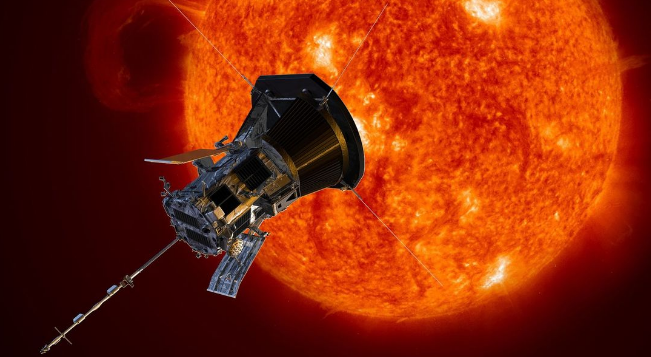
Parker Solar Probe now closest ever spacecraft to the sun
Yekiti Media
NASA has confirmed that its Parker Solar Probe is now closer to the sun than any spacecraft has ever been.
It has beaten the record of 26.6 million miles set by Helios-2 in 1976.
The probe will keep getting closer to the sun until it flies through the corona, or outer atmosphere, for the first time next week, passing within 15 million miles of the solar surface.
Over the next seven years it will make 24 close approaches to the sun, ultimately coming within just 3.8 million miles of the surface.
The Parker Solar Probe is the first NASA spacecraft to be named after someone still alive.
Eugene Parker, a 91-year-old astrophysicist, proposed the existence of solar wind – a steady, supersonic stream of particles blasting off the sun.
He was at the launch of the probe in August.
The mission to get this close to the sun has been on NASA’s books since 1958.
However the technology to make the spacecraft small and light enough to travel at incredible speeds – while surviving the sun’s punishing environment and the extreme changes in temperature – are only now possible.
Scientists have devised ways to ensure the automated and unmanned probe does not melt in the extreme heat and radiation.
A revolutionary carbon heat shield is protecting it, while the tried-but-true practice of using water inside the craft to cool it down is also being utilised.
Sensors make certain the heat shield faces the sun at the right times and it corrects itself if it ends up at the wrong angle.
The $1.5bn (£1.17bn) project is designed to give scientists a better understanding of solar wind and geomagnetic storms that risk wreaking chaos on Earth by knocking out the power grid.
These solar outbursts are poorly understood, but have the potential to wipe out power to millions of people.
SKY




